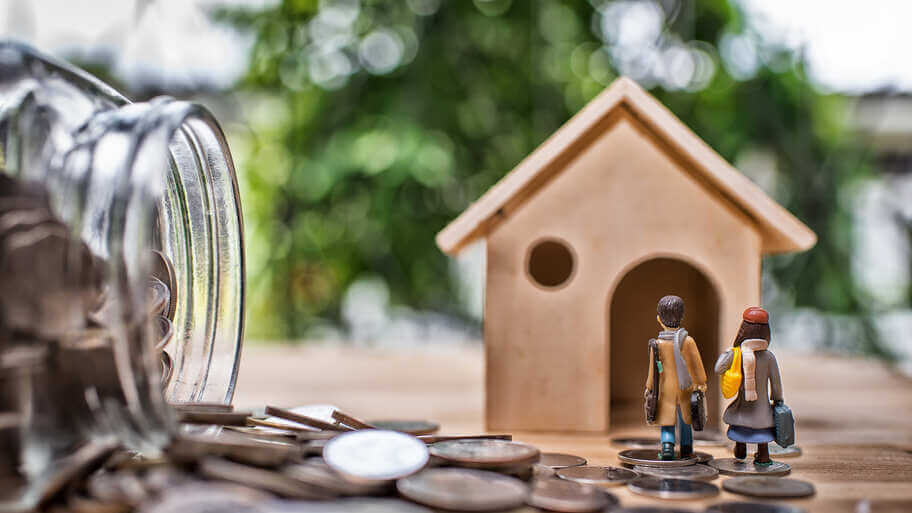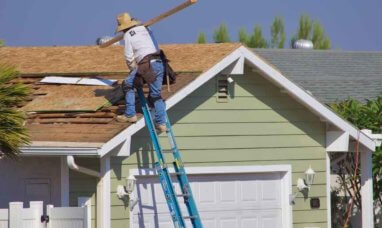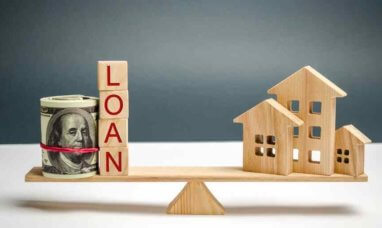What Is a Home Improvement Loan?
A home improvement loan is used to cover the cost of upgrading, renovating, or repairing your home. It is an unsecured personal loan, which means that your home isn’t used as collateral.
Home improvement loans are available from most lenders, with amounts typically ranging up to $100,000. With a home improvement loan, the lump sum that you borrow is paid to you at one time. The loan amount is then paid back in monthly installments over the loan term, which ranges from 1 to 12 years.
Because these loans are unsecured, there’s no need for collateral. This means that the interest rate you’re approved for is based solely on your income and credit score. Not repaying your home improvement loan will negatively impact your credit.
Advantages and Drawbacks
A home improvement loan is a great option if you don’t want to use your home as collateral or if you don’t have enough equity in your home to cover the costs. If you’re planning a big project, this type of loan may be the best option for you.
Home improvement loans are beneficial in that:
-
-
- Monthly payments are fixed, which makes it easier to budget
- Loans are available for amounts up to $100,000
- Funding is fast with online applications
-
While extremely advantageous for homeowners, there are some drawbacks of home improvement loans to be aware of.
These loans may have higher rates than a home equity loan or line of credit. This is because the loan is unsecured.
Home improvement loans also offer no tax benefits. You can’t claim a tax deduction on the interest paid as you can with mortgage interest.
How to Compare Home Improvement Loans
If you decide to go forward with a home improvement loan, it’s important to shop around and get pre-qualified. This way you can find a loan that offers the best rate, terms, and features. When comparing home improvement loans, be mindful of:
-
-
- Annual percentage rates
- Loan amount
- Loan term
- Ability to have a co-borrower or co-signer
-
By comparing home improvement loans from various lenders, you can ensure that you’re getting the best deal possible.
How to Get a Home Improvement Loan
Getting a home improvement loan isn’t as hard as you may think. Here are the steps to find and apply for a loan:
-
-
- Compare loan option. Compare loans from various lenders and also compare a loan to other financing options. Choose the option that offers the lowest interest rates, fits your payment timeline, and offers affordable monthly payments.
- Estimate your loan amount. By this time, you should have a good idea of what your project will cost. Most lenders offer pre-qualification so that you can ensure that you’ll get approved for the amount you need before applying.
- Gather documents. After choosing a lender, gather documents such as your paystubs, W2s, proof of address, and other financial information. The lender will ask for this information during the application process.
- Apply. And now comes the fun part! Larger lenders offer online applications. Smaller banks and credit unions may require an in-person application. You can expect to receive a decision within 1-2 days of applying.
-
Home Improvement Loan Rates
Home improvement loan rates, like other rates, are always changing. However, current rates range from 5.99% to 35.99%. Remember, your interest rate is based on your credit score, credit history, and debt-to-income ratio.
Here’s what you can expect your interest rate to be based on your credit score:
| Credit rating | Estimated APR |
| 720-850 (Excellent) | 11.8% |
| 690-719 (Good) | 17.4% |
| 630-689 (Fair) | 23.4% |
| 300-629 (Bad) | 28.7% (with lowest scores unlikely to qualify) |
How to Use a Home Improvement Loan
An unsecured home improvement loan can be used for any purpose. The loan amount you need will depend on your project, location, and the size of your home. Here are estimated costs for some of the most common projects:
| Project type | Estimated cost |
| Kitchen remodel | $75,571 |
| Bathroom remodel | $24,424 |
| Deck addition | $16,766 |
| Roof replacement | $8,371 |
| Swimming pool | $14,940 |
| Solar panels | $20,000 |
Other Types of Home Improvement Financing
A home improvement loan is only one financing option. There are several possible ways that homeowners can fund their projects. Some of the top options include a cash-out refinance, a home equity loan or line of credit, and an unsecured home improvement loan.
Here are some options you may want to consider:
Federal Loan Programs
There are government programs that can be used to finance your home renovation, including:
-
-
-
- Title I loan
- Energy Efficient Mortgage
- HomeStyle Renovation loan
- FHA 203k loan
-
-
A great option for non-homeowners is the Homestyle Renovation loan for investors. The HomeStyle Renovation loan maximum is $548,250 or $822,375 in high-cost markets. Any costs above this amount will need to be paid out of pocket or financed using some other method.
Conventional Renovation Loans vs. 203k Loans
While these loans are similar, there are some key differences to be aware of.
A 203k home renovation loan is backed by the FHA, which makes it easier for homebuyers to get approved. These loans have lower interest rates than an unsecured loan and are best used to purchase a fixer-upper property or to refinance a current home that needs repairs.
With a 203k loan, you must hire 203k renovation loan contractors that have experience completing renovations under this program.
Home Equity Loan and Line of Credit (HELOC)
A home equity loan offers a fixed rate and is paid to you in a lump sum. Like most loans, the amount is paid back monthly over a set period of time. HELOCs have variable rates and allow homeowners to borrow and repay as you go.
Both options have lower APRs than personal loans, with repayment terms up to 20 years. Home equity loans and lines of credit use your home as collateral. If you fail to pay the loan back, you could lose your home.
Cash-Out Refinance
If current mortgage rates are lower than what you’re paying, a cash-out refinance may be a good idea. With this financing option, you can refinance your existing mortgage to a higher loan amount. You can then use the difference to pay for home renovations and repairs.
Credit Cards
If your home renovation project is in the thousands as opposed to tens of thousands, strategically using a 0% APR card is a great way to save money. Using a rewards card with a low or no interest rate keeps money in your pocket and allows you to benefit from upgrading your home.
Featured Image: Depositphotos








